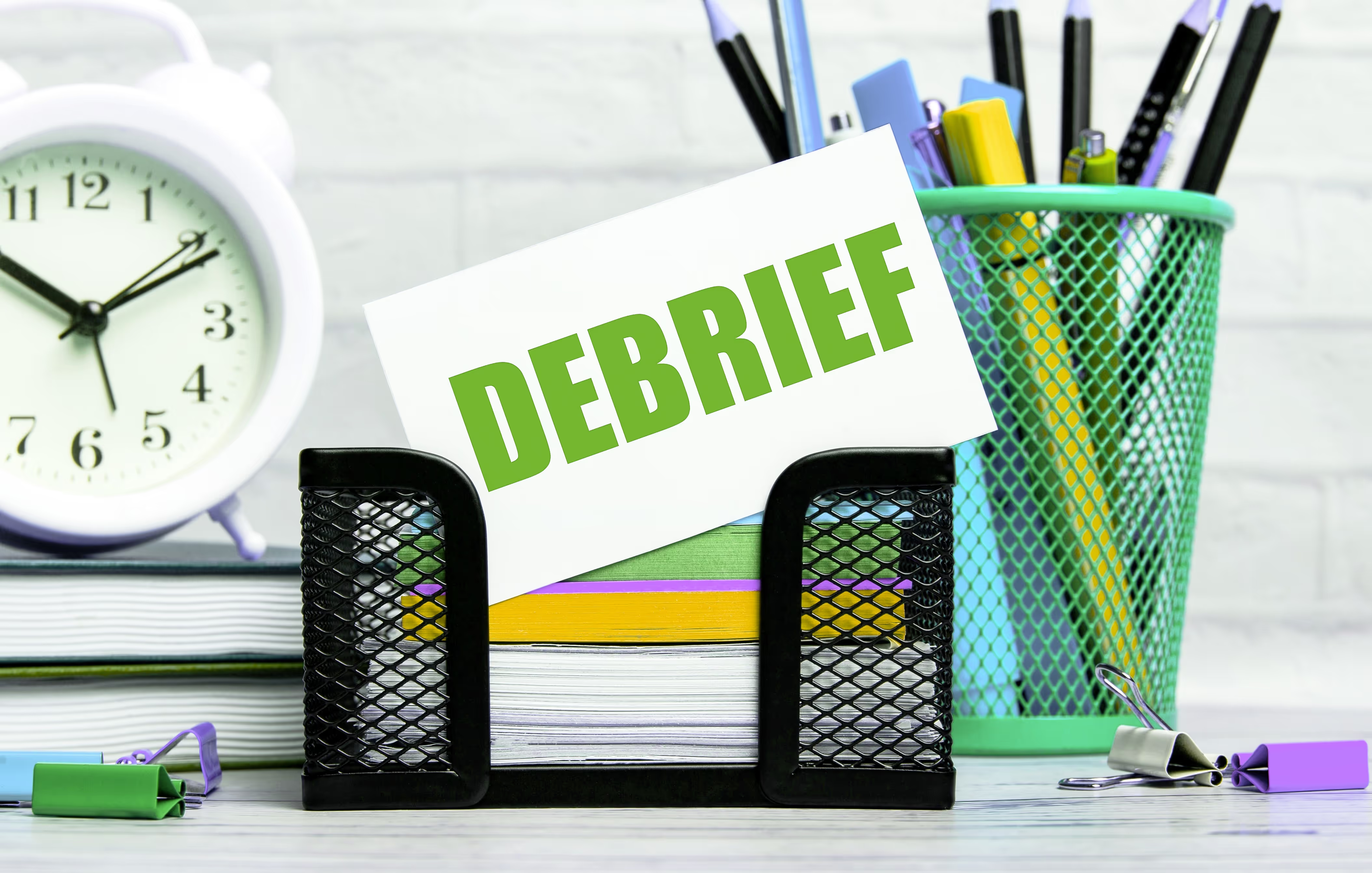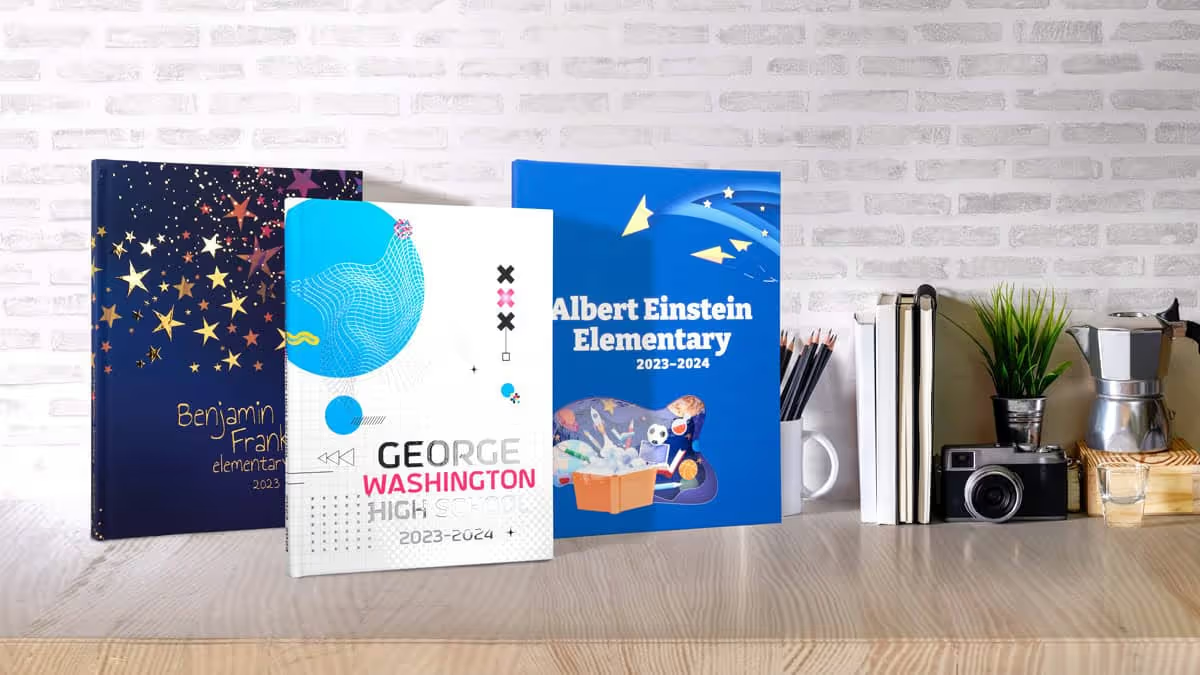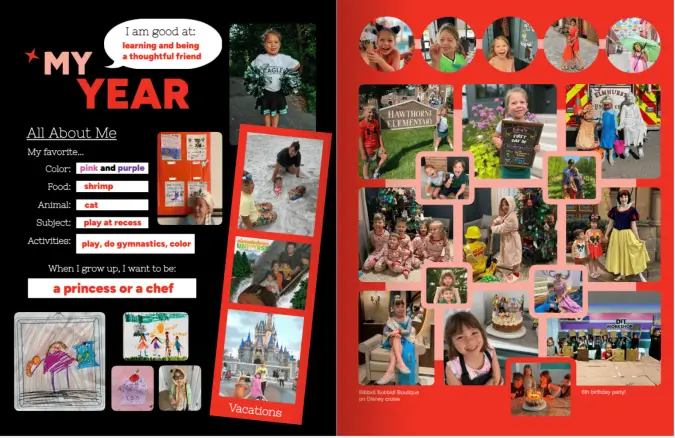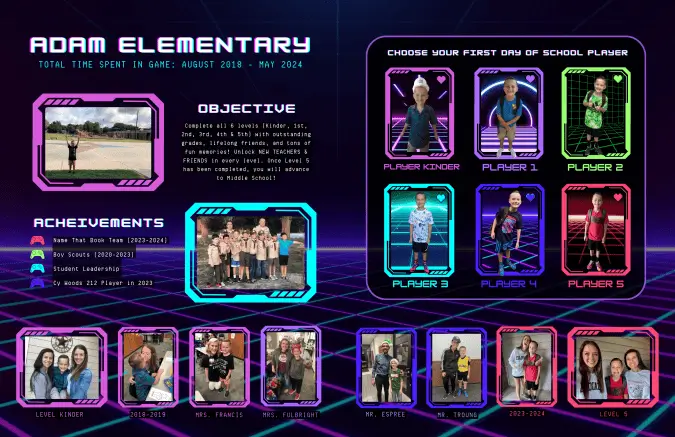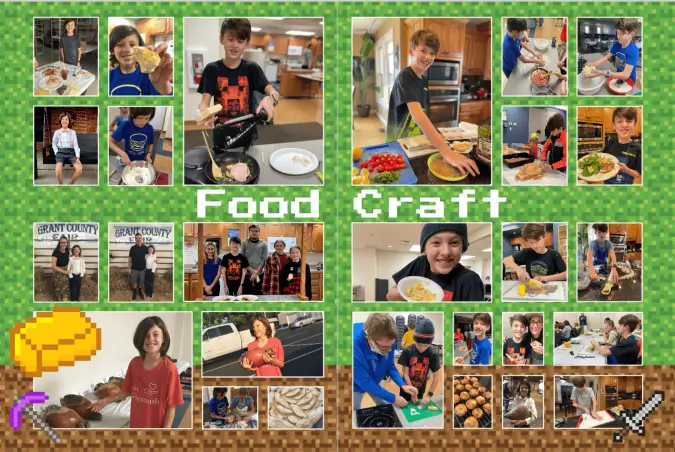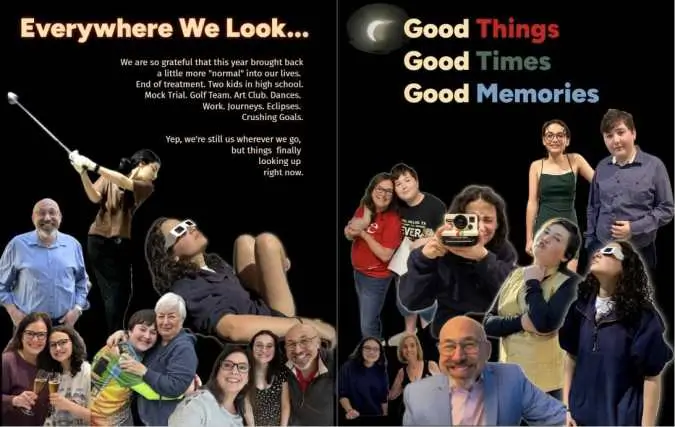New ideas
Looking for inspiration, design tricks, how to make a great cover, promoting your yearbook and engaging your community?
Most recent
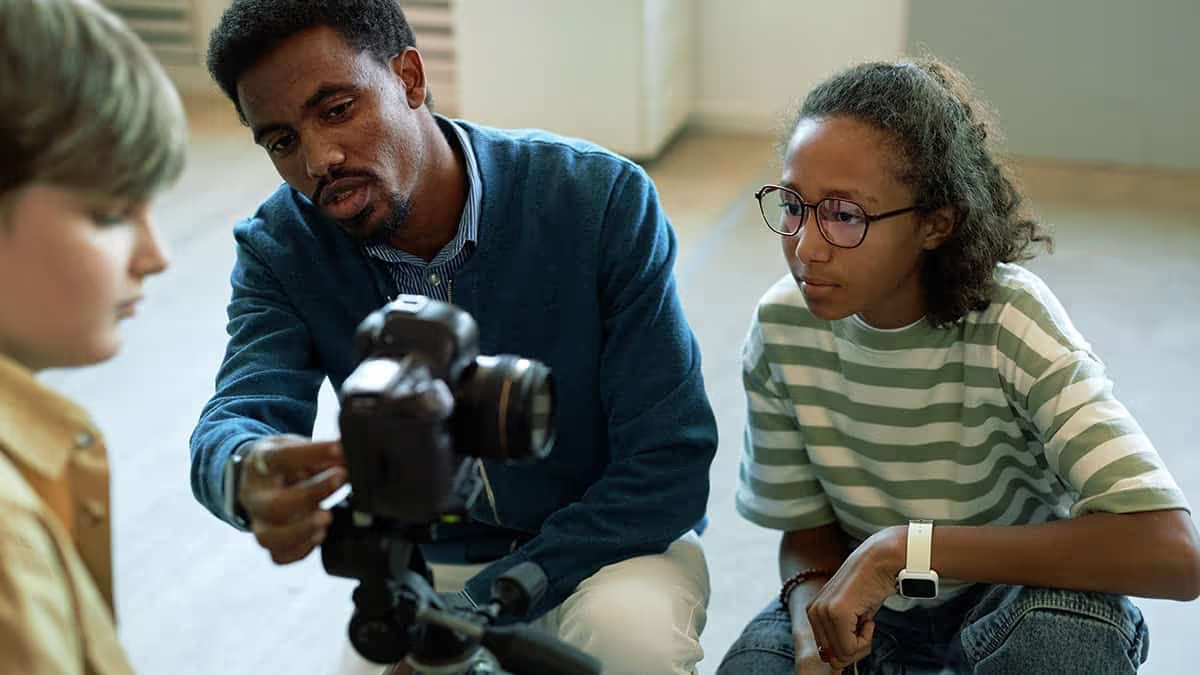
Cell phone ban: how are we getting photos?
With nearly half of US states banning cell phones in the classroom, many advisers reached out for creative solutions for collecting yearbook photos. Student cell phones can have cameras that capture photos as well as or better than traditional cameras, and have become a cost-reducing factor for yearbook teams. As more schools create and tighten policies governing cell phone usage on campus, we need practical solutions for yearbook class.
The yearbook’s mission remains unchanged.
Take heart, yearbook creators, when parent volunteers weren’t permitted on campus, we pivoted. This is no different. [FWIW, I’m imagining being on a horse, like William Wallace, as I type this.]
The quick response
The easy solution is to grab some point-and-shoot cameras for yearbook students to have on hand or a few iPad Pros, if your school permits it. Focus the first few class or club meetings on the basics of composition.
Another solution is photo training with a DSLR or mirrorless camera. Explore aperture (depth of field) and keep track of what ISO and white balance work for specific locations on campus, like the dreaded gym pics, which always look straight out of the 1970s with the yellowed floors and fluorescent lights.
If you don’t have budget constraints, check out our recommendations for yearbook gear.
Capital expenses aren’t for every yearbook team. Additionally, neither of these solutions addresses how to get you and your team everywhere—you can’t. Adding avenues for school staff, parents, and students to contribute photos will grow your reach.
Create a submission pipeline
Photo drop campaigns should be part of every post-event communication from your yearbook team. Did fourth grade take a field trip to the zoo? Reach out later that day to the parents and teachers who went for their snaps.
Keep in mind, the easier it is to share, the more results you will receive. Also, limiting yourself to one or two avenues will simplify your back-end organization.
Yes, this approach might require more planning and follow-up than in past years. Remember, the systems you build now will benefit your yearbook program long after the initial challenges are resolved.
Photos from Teachers and Staff
While we cringe at asking our classroom champions to do one more thing, the thought of not celebrating their outstanding work is far worse. Work with your campus administration to add Google folders to the school’s shared Drive.

There should be a folder for each teacher and school-wide folders for holidays, recess, specific school events, lunchtime fun, assemblies, etc.
Photos from Parents
Many of the advisers in Treering’s Official Facebook Group say they have room parents responsible for in-class photos. Additionally, parents are often present at outside events such as concerts, field trips, and games. Partner with them for photos of
- Off-campus event and athletics photos
- Candids from carpool, pick up/drop off
- First day
- Any dress-up or spirit day
- Summer and winter vacations
- Homework and student art
In addition to a shared folder to which parents can drop images, share an email address.
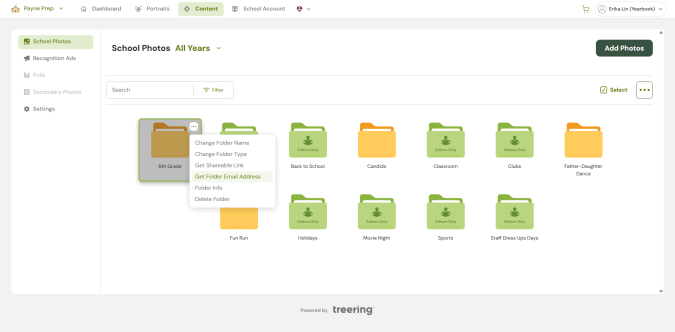
You can even send targeted asks after events: Hey Fatima, It was great to see you at the Science Fair. Would you please send me 2-3 photos of Jackson and his friends so I can include them in the yearbook? Thank you!
Full disclosure, any time I see parents taking photos of their children, I ask them to email those photos to me on the spot.
Shameless.
Photos from Students
If your yearbook program has a class or club component, creating photo assignments is one way to secure photos from students. The last thing you want to do is just tell a student, “Go take photographs of science.”
Many schools employ a beat system, assigning students to specific grades, clubs, and sports. This is a way to monitor coverage while teaching communication and project management. Students connect weekly with their contacts (coaches, teachers), find out what is happening, and take photographs of events.
The beat system also serves as accountability: if Erika’s beats have empty content folders in week three, the editorial team needs to redirect her efforts.
If you need help providing photo support, explore
The key to success lies in early, frequent, and clear communication with your entire school community. When staff, parents, and students understand the goal and their role in achieving it, collaboration becomes smoother and more sustainable.
Explain why the cell phone ban affects yearbook coverage, what kinds of support you need, and how you’ll collect photos. Then, keep the conversation going:
- Remind teachers of upcoming photo ops
- Update parents with specific photo requests
- Train students to use alternative tools and plan ahead.
The more proactive you are, the fewer last-minute gaps you'll face.
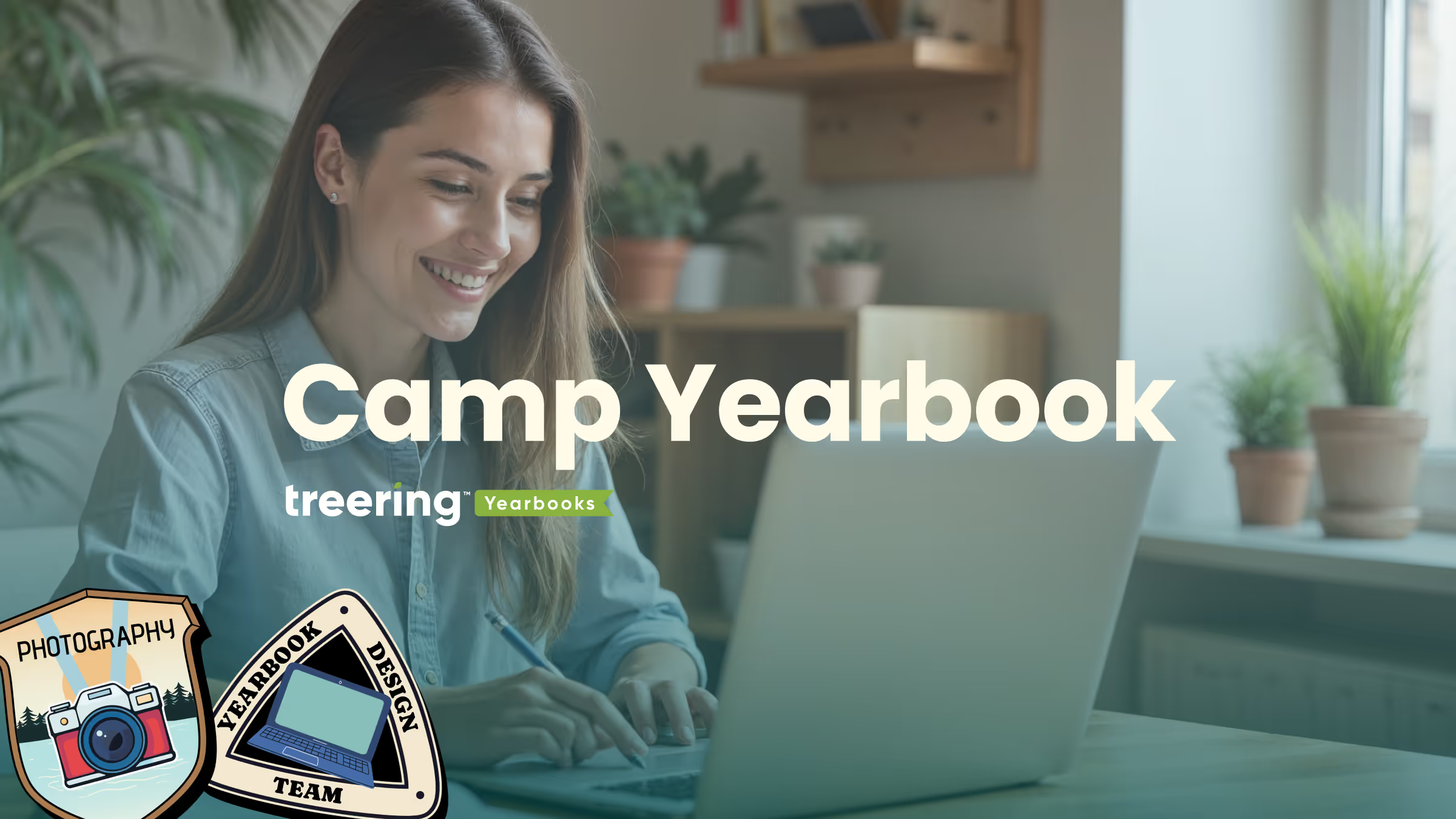
Virtual PD: camp yearbook 2025
We always say we will get started on yearbook planning over the summer. Raise your hand if you follow through. (My hand is down too.) Camp Yearbook, Treering's two-day virtual yearbook planning course, is back. It's part large-group training, part small-group mentoring and idea sharing. And it's 100% live.
The goal: have the first six weeks of yearbooking planned.
Register for an upcoming virtual session. Treering's Yearbook Club features virtual workshops on theme, design, and team training. Bring your questions.
What to expect
Treering's Camp Yearbook is a cameras-on, all-in yearbook planning experience.
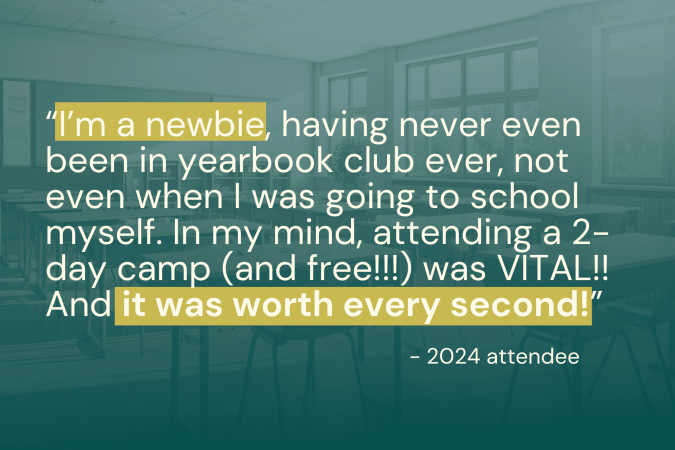
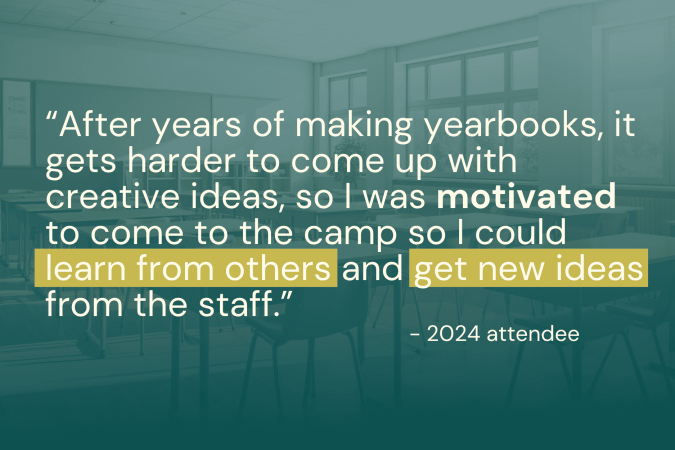
Event structure
Both days are three hours of large-group training and smaller breakouts designed for you to get all your questions answered.
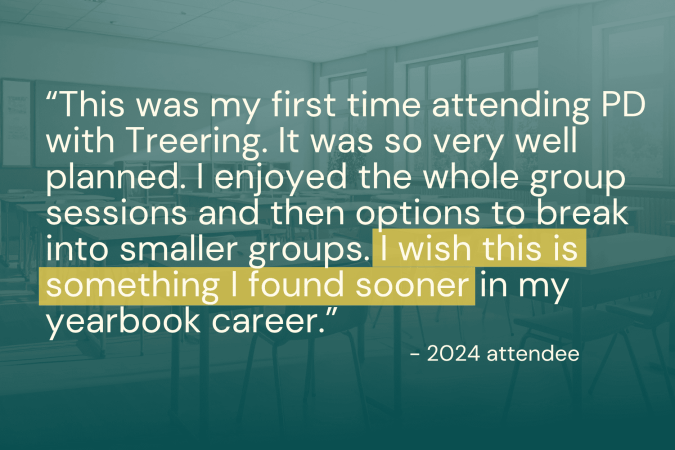
We'll provide the goal-setting worksheets, ladders, idea decks, and resources because we want you to finish Camp Yearbook with your first six weeks of yearbooking planned.
Based on your feedback, Camp Yearbook’s sessions are even more specialized:
- Getting Rooted: designed for yearbook creators with fewer than three years with Treering, this session is focused on time-saving tips, design basics, what to do in class, and all the must-know info to create and market your yearbook.
- Branching Out: for experienced advisers looking to level up their yearbook design or classroom pedagogy, this session is all about intermediate and advanced features such as creating styles, adding content to portrait pages, yearbook staff structure, and problem-solving.
Register via the Yearbook Club webinars page.
Treering mentors
All attendees will be in a small group led by a Treering staff member who served—or currently serves—as a yearbook adviser. In groups specific to school style and yearbook team structure, you can ask questions about grading, crowdsourcing, club structure, page count, and whatever else you need answered. (Your camp counselors aren't Treering life coaches, but close.)
Grow together
Breakout groups for parent volunteers, solo yearbook coordinators, educators, and club leaders mean you get meaningful support and specific-to-you resources.
Register NOW for Camp Yearbook 2025
Camp Yearbook 2025 FAQs
Your questions deserve answers!
How is Camp Yearbook different from Treering Live (TRL)?
TRL is Treering’s flagship event. During National Yearbook Week, TRL will have all the design training, coveted prizes, and organization inspiration yearbook advisers have come to expect. We look forward to it as much as you do!
Camp Yearbook is a summer PD program for yearbook coordinators and advisers who want to get more from their program through professional mentoring and collaborative idea-sharing. It’s a cameras-on, all-in yearbook planning experience.
How do I know which session to attend?
Camp Yearbook is structured differently this year: based on your feedback, we have the yearbook overview to support newer advisers and a second session to challenge the veterans.
BOTH have sneak peeks, specialized group training, and breakouts with Treering mentors.
What do I need to prepare for Camp Yearbook?
Make sure Zoom is up-to-date. This helps with breakout sessions and sound quality.
If possible, have previous copies of your yearbook and the 25-26 school calendar.
How much is it?
Free ninety free. Charging extra for support and training is not our thing.
Will I get CE/PD hours for attending?
Yes! Upon request, attendees will receive a certificate for six hours of yearbook production and classroom planning.
Can students attend?
Nope. Consider this a break… a working break.
Will Camp Yearbook be recorded?
Camp Yearbook is an interactive, experiential event. Recordings will not be made public.
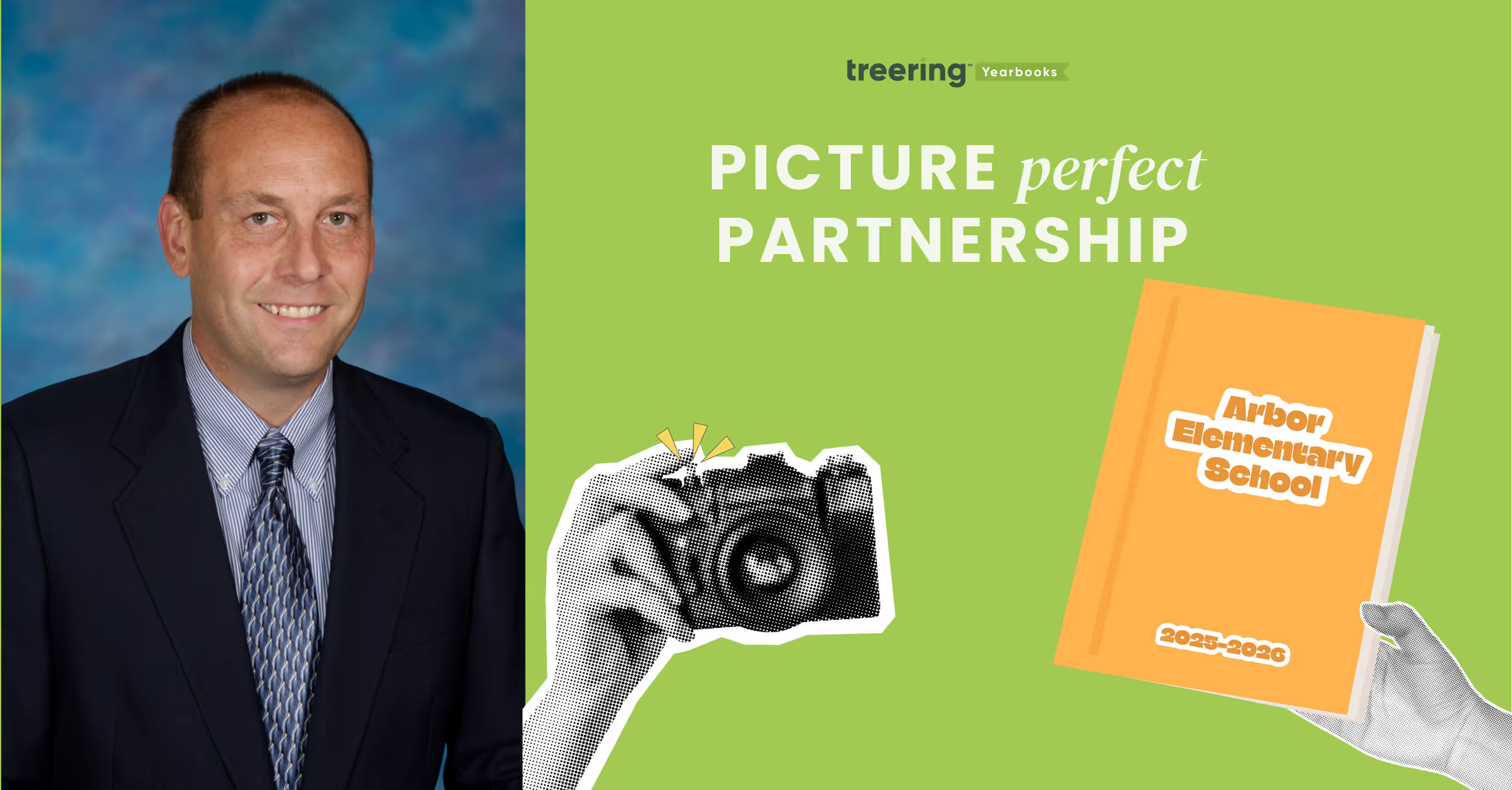
A pro photographer's playbook for perfect team shots
Our guest expert is David Burns, President of Color Portraits - a longtime Treering school photography partner servicing Illinois and Wisconsin. He's been framing perfect team shots since back when "post-game snacks" meant a chocolate bar with nougat and parents weren't yet reading ingredient labels.
After 20+ years and thousands of school photo sessions across the Midwest, I've seen it all—from squinting soccer teams in harsh sunlight to last-minute makeup photo scrambles for absent students. At Color Portraits, we've mastered the art and science of school photography, turning potential chaos into seamless operations that produce stunning results. These battle-tested strategies will transform your yearbook from good to unforgettable—without the headaches, delays, or disappointed parents.
Efficient Scheduling Strategies
For group photo days, we recommend scheduling one group every five minutes. This allows photographers to:
- Set up each group while the next one arrives
- Arrange students in height order for quick positioning
- Maintain a smooth flow throughout the day
For larger groups (school plays, entire grade levels), allow 10 minutes to prevent scheduling backups.
Middle School/Junior High Considerations
Middle schools typically schedule sports pictures three times yearly (fall, winter, spring). We recommend:
- Scheduling after school to accommodate parent-volunteer coaches and uniform changes
- Taking pictures during each sport's season for proper uniform distribution
- Capturing individual photos as athletes arrive in uniform, followed by group shots when coaches arrive
Composition Tips for Various Group Sizes
Create rectangular rather than square compositions to properly fill the frame. For optimal results:
- Utilize stairs, risers, or bleachers to ensure every face is visible
- Incorporate props for club photos to add character and personalization
- Consider photographing sports teams in their natural environment (soccer teams by goals, track teams on the track)
Lighting Techniques: Indoor vs. Outdoor
Indoor Photography:
- Provides consistent controlled lighting
- Allows for fixed flash distance and stable exposure settings
Outdoor Photography:
- Cloudy days offer less light variation but muted skies
- Sunny days provide vibrant backgrounds but create shadows and squinting
- Position groups with the sun behind them and use flash to reduce shadows
- Avoid direct sunlight into the lens
Student Identification Strategies
Send digital images to coaches or club sponsors for proper student identification. Maintain basic row formations to facilitate easy identification.
Balancing Posed and Action Photography
Our standard sports shoots focus on group and individual photos outside of game days. For action shots:
- Collect images from parents or yearbook staff taken during actual games
- Create collage pages featuring action shots from different grade levels
- Position these collages before or after formal group photos
Handling Makeup Sessions
When students miss the original photo day:
- Leave space in the original formation to add missing students via Photoshop
- This approach looks more natural than retaking group photos
- Retakes often create new absences, compounding the problem
File Organization Recommendations
Create an intuitive organization system:
- Establish separate folders for each team and club
- Request proper labeling (team grade level or club name) when parents submit photos
- Always back up all images to cloud storage or external devices
Accommodating Photo Restrictions
For students with privacy concerns:
- Ask parents if listing the child as "Not Pictured" is acceptable
- Omit names completely when parents request
- Prioritize parental decisions regarding their child's privacy
Timeline Planning for Yearbook Deadlines
Plan your photography schedule strategically:
- Capture club photos early in the school year when groups form
- Take sports team photos during their respective seasons when uniforms are available
- Complete all team photography by February at the latest
- This timeline provides yearbook editors ample preparation time
This comprehensive approach ensures your school's sports and club photography will be efficient, professional, and ready for yearbook publication.
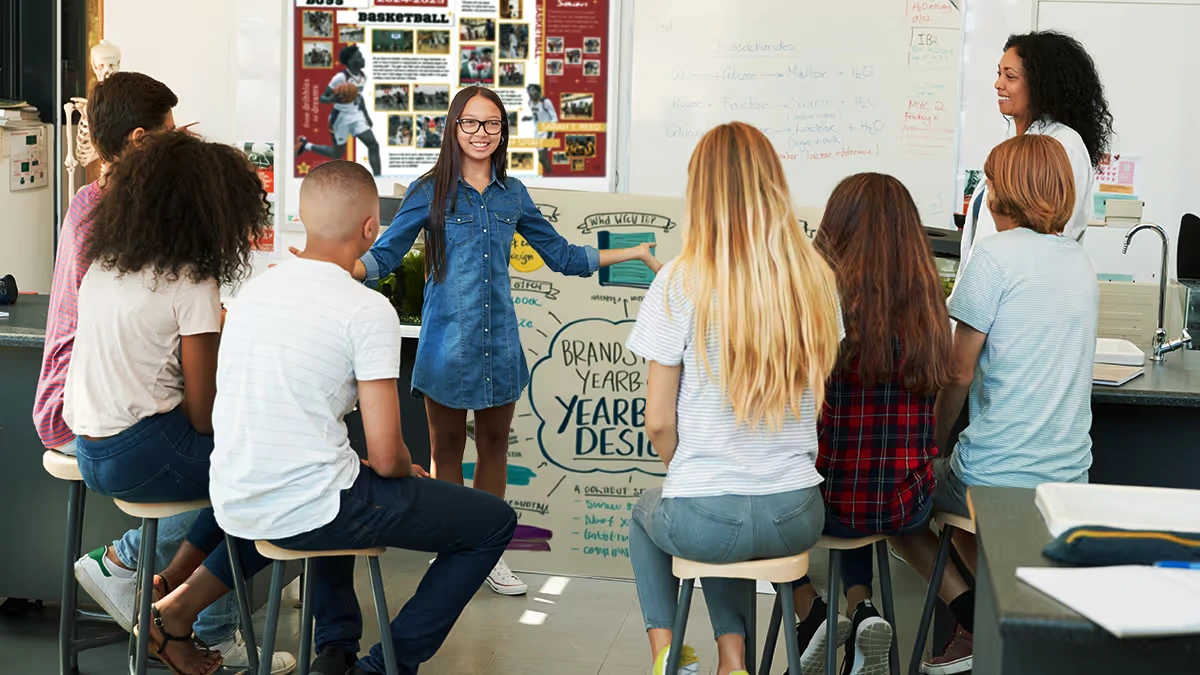
The 5 game-changing blog posts you’ve (somehow) been missing
You might be missing these favorite yearbook ideas. If any part of your yearbook process feels stuck, scattered, or stale, one of these posts is probably the solution you didn’t know you needed. Read them. Share them. Build them into your curriculum or club routine and watch your yearbook program transform.
1. Easy +1: a guide to leveling up your yearbook
This comprehensive guide outlines five key ways to elevate your yearbook beyond collage pages. It provides practical steps to add something new to next year’s book: a focus on storytelling, expanded coverage, better photography, or modular design.
Use the five focus areas to create
- Rotating workshop stations early in the year to build foundational skills.
- A self-assessment rubric for your team.
- A “Level Up” day where each leader identifies one area to improve in their section.
2. How to choose a yearbook theme
This piece walks you through the theme process without relying on chaotic verbal brainstorms. (Some yearbook creators even find its anti-brainstorming angle a little divisive. And we liked it.) It provides teaching support to non-designers and new advisers with practical, flexible guidance.
It includes prompts, real-world examples, and tips for involving students at all grade levels.
3. 10 people to thank
Yearbook creation doesn’t happen in a vacuum. This gratitude-focused post highlights the unsung yearbook heroes, including the front office staff, IT teams, principals, coaches, and more. Yearbooks are a high-stress, deadline-driven project; injecting gratitude is a reminder that the yearbook extends beyond your class or club.
Make gratitude part of your yearbook culture:
- Include a recurring “Who Helped You This Week?” check-in during staff meetings.
- In the yearbook, you can include a “Behind the Book” thank-you spread.
4. Adviser advice: keep, change, stop
One of the few tools that seamlessly transferred from student teaching to the newsroom is “Keep, Change, Stop,” a structured reflection tool. It helps teams evaluate the yearbook process with three simple prompts: what to keep, what to change, and what to stop doing. (Clever name, eh?)
It’s an adaptable debrief for editors, staff, and advisers alike.
In this blog post, four yearbook advisers share their POV. Based on their real-life examples, we have a framework to drop what’s not working and preserve beneficial habits each school year.
Doing this exercise with middle and high school yearbook creators encourages student voice and leadership in shaping the next year’s book. “Keep, Change, Stop” promotes a healthy, intentional yearbook culture.
5. Yearbook debriefing: a summer reflection
This five-minute read outlines a strategic, low-stress way to reflect on the yearbook process over the summer. It offers questions and prompts to help advisers and returning staff capture what worked and what needs to shift before the next yearbook creation cycle begins.
This post helps you process what happened while it’s still fresh, and with a little distance.
To use it now, assign editors a summer reflection form based on the post’s questions and use their input to build your back-to-school agenda.
We all want our yearbooks to stand out, and sometimes the best yearbook ideas (wink, wink) are hiding in plain sight. We hope these five blog posts deliver the clarity, creativity, and strategy you and your staff need.

Adviser advice: 10 tips for candid photos
There’s something profoundly satisfying about capturing that one perfect image—when the light and laughter align so magically, freezing time in a way that feels effortless. According to Yearbook Hero Emily Wilson, those moments are rare, fleeting, and almost impossible to predict. To help, she shared her top tips for capturing authentic moments in candid photos.
Get to know Wilson and her developing passion for photography in her own words. (See what we did there?)
After my second child was born, my husband gifted me my first “real” camera. It was a Nikon D5000, and it felt cumbersome and clumsy in my hands at first. I’ve never thought of myself as particularly "techie"—just the word exposure makes me break out in a mild panic. But what I do know is how to tell a story, and that’s always been my default. Photography, for me, has never been about mastering every setting and toggle on a camera. It’s been about capturing moments that matter.
“Life isn’t about how many breaths you take, but about the moments that take your breath away.” Few movie quotes have stuck with me over the years, but this one has (thank you, Will Smith in Hitch). I think of it often, especially when I’m scanning the world through my camera lens, searching for those breathtaking moments.
Over time, I’ve learned that no amount of technical knowledge can replace an innate understanding of people—their emotions, connections, and desires.
Emily Wilson
10 Tips for Authentic Yearbook Photography
For the past five years, I’ve served as the yearbook advisor for a high school. It wasn’t something I ever planned—I had envisioned teaching only English, not journalism. I’d never written formal journalist pieces or worked on a yearbook before. The closest I’d come to anything remotely similar was scrapbooking and journaling. But armed with limited technical knowledge and an abundance of creative confidence, I decided to embrace the challenge.
While my student staff and I still have plenty of room to grow and refine our journalistic techniques, we’ve made significant strides. Here are ten tips that have propelled our yearbook forward, helping us create something we’re genuinely proud of.
1. Capture Candid Moments
Yearbooks are about documenting real life, not just posed portraits. Be a quiet observer during events, in classrooms, and on the sidelines. Look for laughter, concentration, or spontaneous gestures that tell a story.
2. Get to Know Your Subjects
Whether you’re photographing a pep rally or the chess club, take a moment to connect with your subjects. A quick chat can help them feel more comfortable and natural, translating to more authentic images.
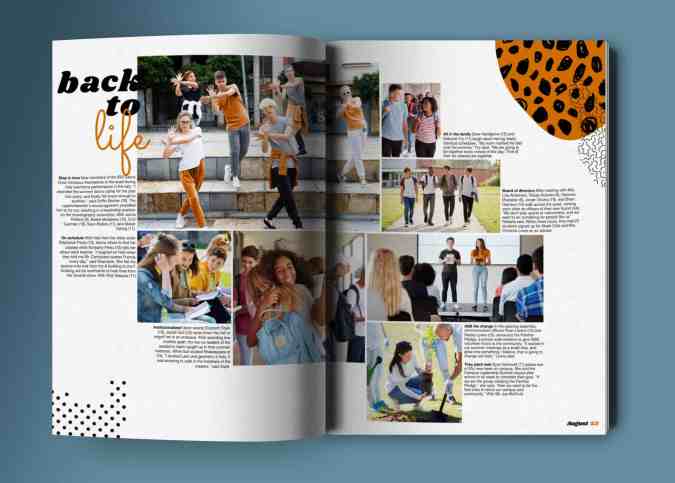
3. Tell the Story of the Year
Think of each photo as part of a larger narrative. The yearbook isn’t just a collection of faces; it’s a snapshot of a school’s unique culture, achievements, and challenges. Seek out moments that capture the spirit of the year.
4. Vary Your Perspectives
Avoid taking all your photos from eye level. Get low for a dramatic shot of the basketball team huddled on the court, or climb up for a wide-angle view of a school assembly. Changing your perspective can make ordinary scenes more dynamic.
5. Be Mindful of Backgrounds
A messy or distracting background can take the focus away from your subject. Frame your shots intentionally, and if needed, move slightly to avoid clutter like trash cans, backpacks, or bright exit signs that draw attention away from the action.
6. Use Natural Light When Possible
School settings can have harsh or dim artificial lighting, so position your subjects near windows or use outdoor spaces when you can. If shooting indoors, experiment with angles and settings to avoid heavy shadows or overexposed areas.
7. Focus on Emotion and Interaction
The best yearbook photos highlight relationships and emotions. Capture the high-fives after a touchdown, the quiet focus during a test, or the joyous chaos of a classroom celebration. Emotion adds depth and meaning to your images.
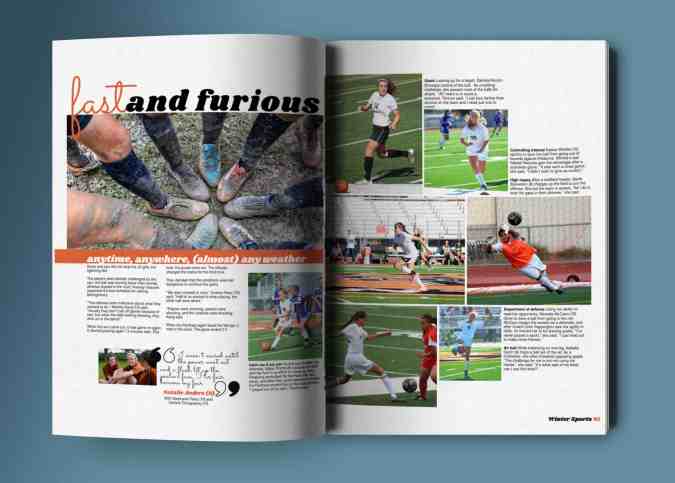
8. Photograph the Unexpected
Some of the most memorable yearbook images come from overlooked moments—like a student tying a friend’s shoe, a teacher’s reaction during a surprise assembly, or a band member backstage adjusting their uniform. Look for the stories others might miss.
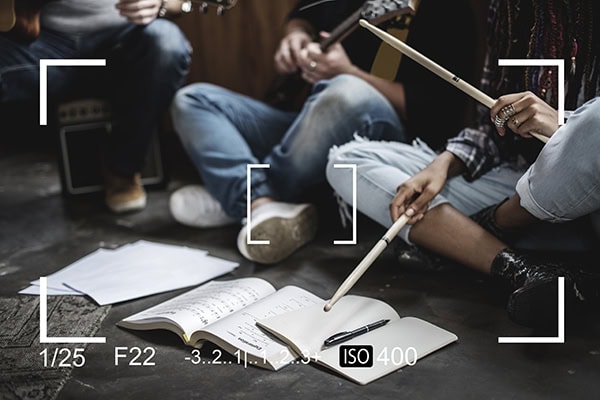
9. Keep It Balanced: Action and Detail
Yearbooks benefit from a mix of sweeping action shots and small, intimate details. Pair a mid-game photo of the soccer team with a close-up of their muddy cleats or a teammate’s hands clapping after a goal. These contrasts add richness to the narrative.
10. Involve the Whole School Community
Yearbooks celebrate everyone in the school. Don’t just focus on the obvious highlights, like sports and performances. Include the quiet moments in the library, the budding friendships in the lunchroom, and even the behind-the-scenes work of staff and volunteers.
Beyond the Lens
Photography is about more than just pointing a lens at a subject. It’s about anticipation. You have to almost feel what’s coming before it happens, predicting not just the movements of your subject but also the reactions of those on the fringes of the frame. Sometimes, the most compelling images come not from the people you’re focused on but from those nearby—the onlookers. These unexpected participants bring depth and richness to the story unfolding in your viewfinder.
Take, for example, a family portrait session. You might be working to capture the perfect posed shot, but suddenly, one of the kids is overtaken by a fit of giggles. Naturally, you’ll want to pivot and catch those big, toothy grins and wild, waving arms. But as a parent and a storyteller, I’ll instinctively glance at Mom, too—her expression in response to her child’s laughter. Those are the authentic moments.
Those are the moments that matter. They’re the ones that, years from now, will make you pause, smile, and maybe even tear up as you reflect on how quickly life moves. It’s these moments that take your breath away.
Learn more about Wilson’s yearbook journey here.

Speaking yearbook
When anyone first steps into the world of yearbooks, it can feel like learning a new language. Terms like "gutter," "bleed," "spread," and "copy" have specific meanings that may be different from everyday language. Understanding this unique vocabulary is part of the journey. We hope that after your read this you can speak yearbook fluently.
What are the Basics for Yearbook Creation?
To borrow from classical education, the grammar stage is the first step in learning any subject. It focuses on mastering foundational knowledge and vocabulary so we can eventually progress to more complex tasks. During this stage, the focus is on memorizing terms and concepts, recognizing patterns, and building an understanding of a subject’s basic structure.
In the context of yearbook creation, this foundational knowledge helps you communicate effectively with students, your publisher, and fellow volunteers.

Step 1: Learn the Key Terms and Concepts
Just as you would start learning a new language by building vocabulary, learning yearbook terminology is your first step. Here are some essential terms to get you started:
- Bleed: extra space around your page that is intentionally printed, then trimmed by the printer. The standard bleed size is 1/8 inch, and is usually used to allow for movement the paper during printing.
- Copy: the content of an article or news element. (Basically, it’s the words used to tell a story.)
- Ladder: a chart that represents the pages in a yearbook. It can be helpful when planning section placement and page content.
- Gutter: the space between two facing pages (an important place to keep clear because, when a yearbook is bound, the space between the pages shrinks). It’s best to apply a 1/2 inch margin to both sides of the gutter, or 1 inch in total.
- Spread: two pages that face each other in a yearbook.
If you’re craving more or want to quiz your yearbook class or club, check out Teaching Yearbook: 24 Yearbook Terms. We even built you a Google Form to test their knowledge!
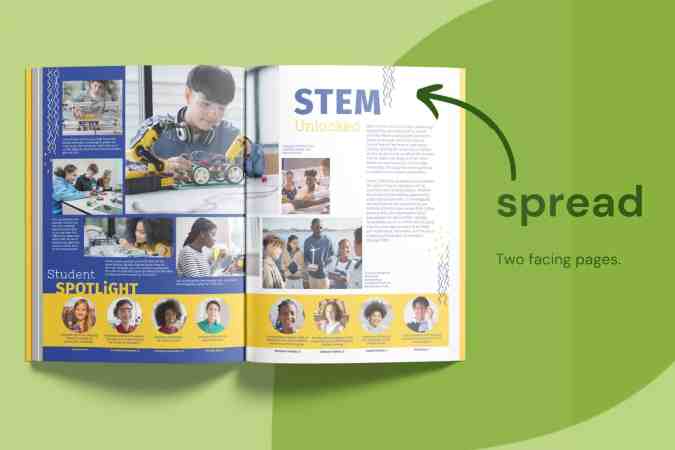
Step 2: Recognize the Patterns
Certain patterns and conventions are used repeatedly. Understanding these patterns can be helpful when organizing content or working with the team on visual elements. Here are a few patterns to look out for:
- Sections: Yearbooks are typically divided into People, Student Life, Organizations, Sports, Academics, and Reference. This pattern helps create a natural structure that tells the school’s story.
- Design Hierarchy: Pages are often designed with a visual hierarchy, placing the most important elements—like headlines and main photos—at the top or center. Everything should be built from there.
- Themes: Each yearbook has an overarching theme that shapes its design, colors, and tone. Applying theme elements across spreads will help you stay consistent and focused on the story you’re telling.
Step 3: Practice and Apply
The final part of the grammar stage is applying your knowledge. Start by using these terms and patterns as you work with other volunteers and students. For instance, if you’re helping with a layout, use terms like “spread” and “gutter” when discussing the design. Practicing the vocabulary helps reinforce your understanding and builds confidence. Our favorite review activity is below.
Mastering the Basics to Move Forward
By building a solid foundation in yearbook terminology and structure, you’ll increase your comfort level with the language of yearbook creation, allowing you to collaborate and contribute meaningfully to the project. The next step is to level up to more advanced stages of yearbook production, perhaps by trying modular design or a chronological yearbook.

Easy +1: a guide to leveling up your yearbook
A colleague who studied violin using the Suzuki Method shared that he was able to succeed because he didn’t go from 0-60 in a few lessons. He mastered a concept, then added another. This anecdote inspired me to make “Easy +1” my MO. I use it as a guide for teaching my students to read, increasing the palate of my toddler, and improving each yearbook of which I am part. We don’t have to do it all.
You don’t have to do it all.
With the right support and the resources we picked for you below, choose one thing (yes, one!) as a focus for this year. Get in the details. Fail. Learn from your mistakes, and to paraphrase Michael Scott, create “even harder.”
3 Photography Helps
Improving yearbook photography is going to have an immediate impact. Why? The assumption is that the yearbook is a book of photos. While I truly wish people went as crazy as I did about the wordplay in ledes and headlines and understood the thematic verbal-visual connection, knowing parents, teachers, and students are sharing storytelling photos is part marketing genius, part one-less-thing-this-adviser-has-to-do.
1. Set Up a Sports Photo Submission Process
Tap into whatever system your school uses to share files using Treering’s crowdsourcing tools. In addition to shared folders, Treering also has Dropbox, Facebook, Instagram, and Google Drive integrations. Remember to include groups such as the marching band, poms, cheer team, boosters, and the spirit squad which are also at sporting events.
2. Teach Photography
(Spoiler alert: if you’re not a photographer, you can learn alongside your yearbook team.) We created these five mini-lessons to level up your photography.
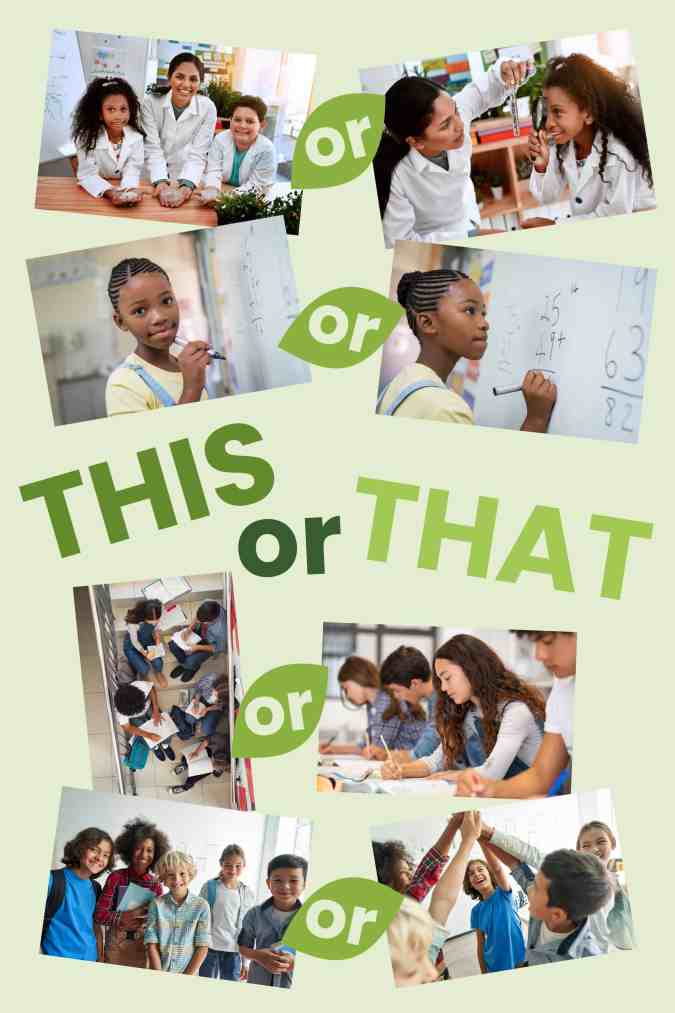
3. Create a Shot List (or Use Ours!)
Classroom photos highlight the bulk of a student’s in-school day. And I promise you, they aren’t lined up against the classroom centers with fake smiles. Do yourself and the staff on campus a favor: show and tell. Show examples of action pics in the classroom. Tell them what you need. Professional photographers use shot lists to ensure they take all the essential photos and their clients receive what they need.
How To Include More Students in the Yearbook
Yearbook coverage is a personal soapbox. Our job is to create a yearbook that accurately reflects our student body from price point to the people pictured. Here are five ways to improve yours.
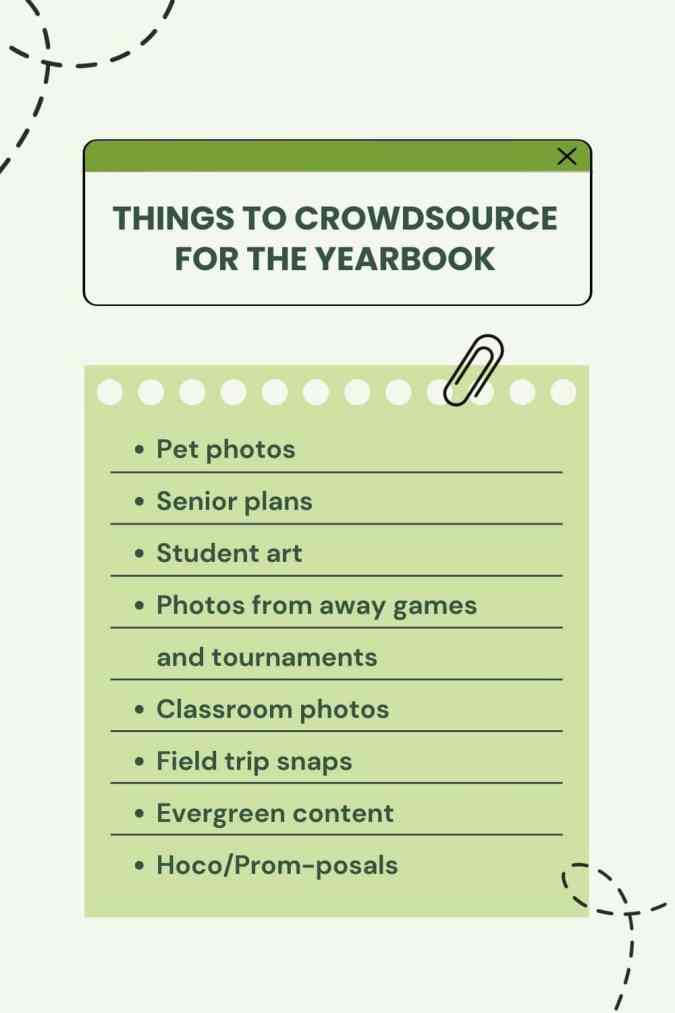
1. Crowdsource Content for a More Equitable Yearbook
If you want your book to look like your school, your school needs to help you build your book.
2. Develop Evergreen Content
Using these 40 open-ended interview questions, you can get students talking. Start with a question of the day and have your yearbook team members connect with five other students. The next day, there is a fresh question for five different students. And so on.
3. Change How You Cover Holidays
Many of us parents grew up with the adage: politics and religion never make for polite conversation. By focusing your interviews on the individuals—versus the religious or cultural practice—you will see their POVs.
4. Create Topical Collage Pages
There’s a difference between a printed pile of pics and a well-designed layout.
5. Shrink Your Portraits and Add Content to Portrait Pages
Personality profiles, responses from the evergreen content (see #2 above), and infographics can increase the impact of your class pages. Feature those students who aren’t starring in the spring musical or beating school records.
Level Up Your Layouts
You can upgrade your yearbook’s design by applying hierarchy in your layout design.
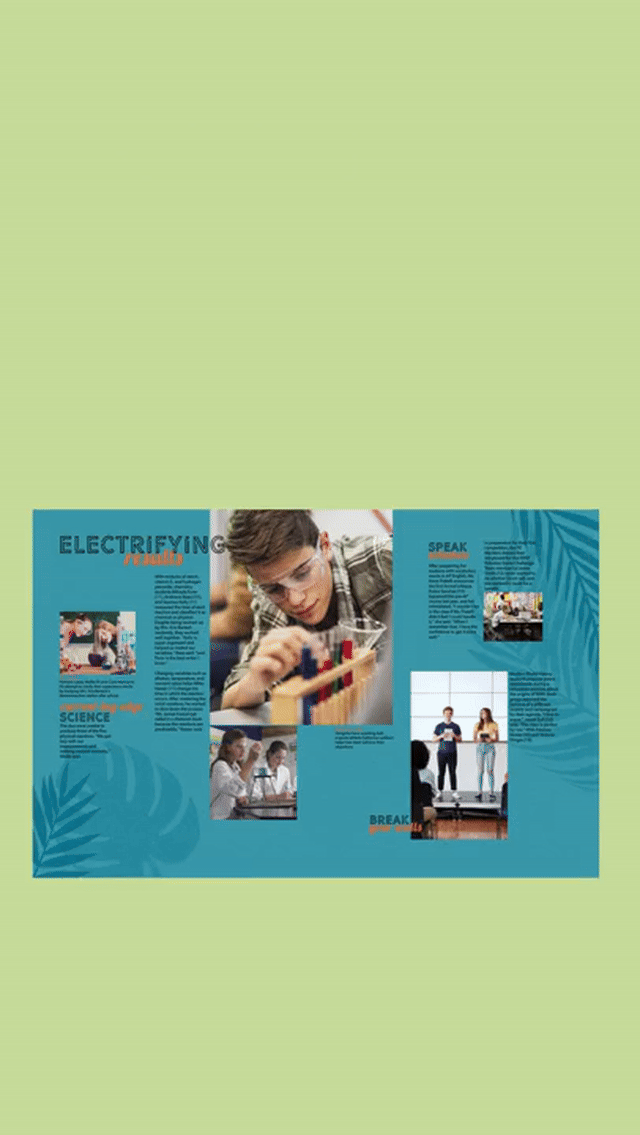
1. Design Hierarchy Basics
Identifying dominant, secondary, and tertiary elements will help you see why some pages “work” and others do not.
2. Mild, Medium, or Spicy Design?
Yearbook Hero Lauren Casteen developed a scaffolded approach to teaching yearbook graphic design to her students and created these adviser resources.
3. The Truth About Yearbook Fonts
Your font choice will affect and effect your buyers. Choose wisely.
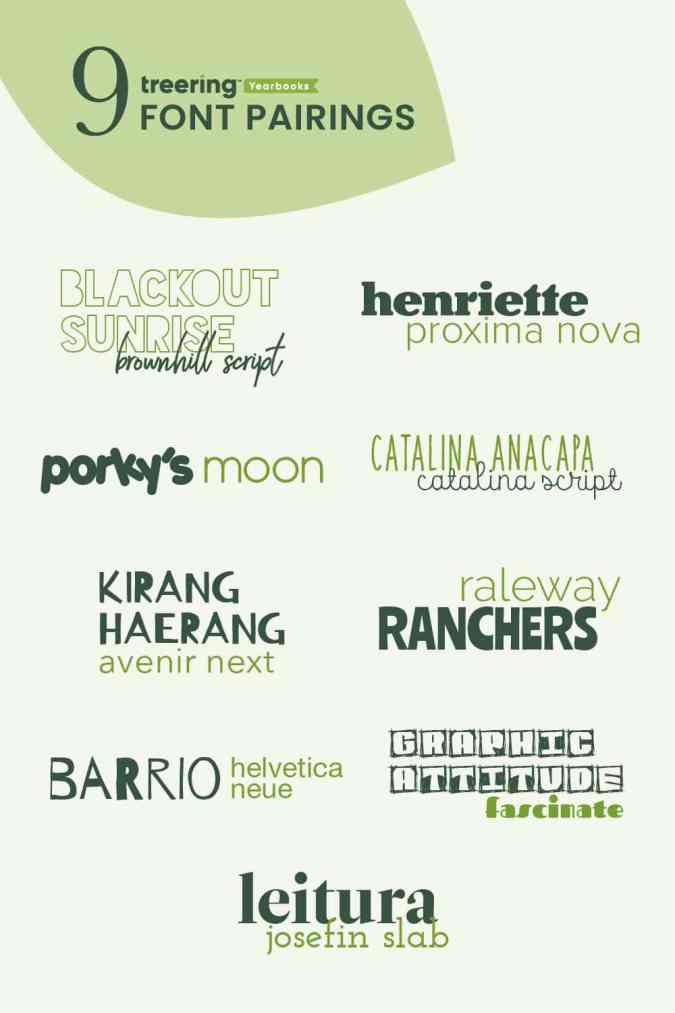
4. Mastered the Above? Try Modular Design
Design hierarchy is essential when going modular: each mod has its own dominant and secondary elements that fit into the structure of the spread. When done well, modular design improves consistency, collaboration efforts, and coverage.
We took the first step in gathering lessons, examples, and tips from other editors. It’s your turn to take the next one.

Simplify picture day with these 5 tips
Picture day either makes you call out ill or grab disposable combs and a spray bottle for flyaway patrol. With portraits making up 40-60% of a yearbook, anything Treering can do to make it easier on you is a win-win-win. It’s the bulk of most elementary school yearbooks. It’s where there’s the most potential for error. It’s where you’ll prevail this year.
1. Find a Yearbook Photographer
When interviewing a yearbook photographer, be sure to learn about the photographer's
- Experience: How long have you been in business?
- Security measure: How do you vet employees? What does your background check process entail?
- Training: What does your photographer training look like?
- Dependability: Every school photography company is experiencing staffing issues. Ask if they are prepared.
- Turnaround time: What is the time from picture day to delivery? How do I get my yearbook export?
- Longevity: How long are the photos available?
Consider all factors—quality of work, professionalism, cost, and feedback from local references—in your search.
2. Prep for Picture Day
As you create a ladder and assign spreads to portrait pages, your photographer prepares by organizing students in their database to produce PSPA-formatted portraits for the yearbook. (PSPA is the fancy abbreviation for the industry-standard way portrait photographers and yearbook software communicate.)
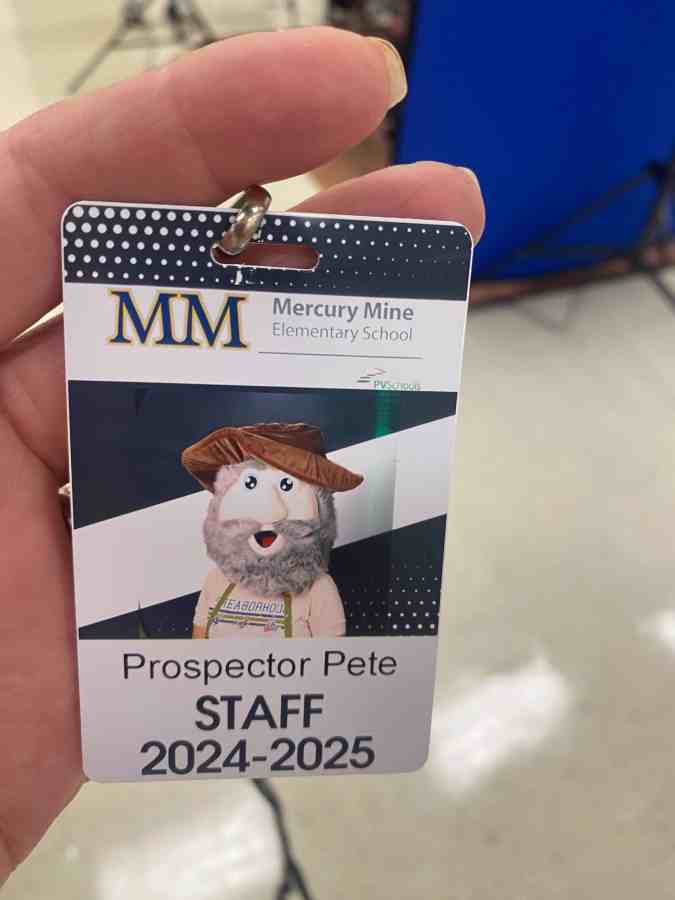
School photographers need accurate information well before they arrive at your school. If you don’t receive a template, ask what specific details they require and their preferred format.
This is so important. For the yearbook, traditionally all photographers would need name, grade, and teacher. Photographers use school data provided to the photographer to create all school services including a PSPA file, such as IDs. The more info the better! This means your picture day photographer may give you a template with room for house names or team names, room numbers, and staff salutations.
3. Go From Picture Day to Yearbook Pages
Make sure you know your photographer’s expected turnaround time before scheduling your school picture day. Most need 3 to 4 weeks. Given that time frame, if you schedule picture day in mid-September and hold a retake day in November, you’ll have all the portraits for the yearbook before winter break.
This syncs nicely with winter webinars by Treering’s Yearbook Club to help you flow your portraits. And with Treering’s three-week turnaround, you’ll have time to add any students who join in the second semester.
4. Create Your Schedule… and Share It Early
Picture day should be on the school calendar from the beginning so parents and teachers can plan. Work with admin to share the schedule with staff and parents at least a week in advance.
The best scheduling advice we can give is paraphrased from “Toy Story 2.”
At the high school level, getting students and faculty through the queue may feel like you’re on the logistics staff for Major League Baseball or in an air traffic control tower. Breathe deep. You’ve got this.
When creating the picture day schedule, allow the appropriate time for each class. The guidelines below should help.
- Pre-K and Kindergarten: Plan for upwards of one minute per student. (About 25 minutes for a 20-30 student class.)
- Grades 1-5: Plan for 45-55 seconds per student. (About 20 minutes per 20-30 student class.)
- Middle and High School: Plan for 45 seconds per student. (About 18 minutes per 20-30 student class.)
Your photography company should send one photographer for every 250 students.
5. Recruit Picture Day Volunteers
If your school allows it, parents can help prep students for the camera. Remember flyaway mom in the opening paragraph? Chances are, you have a parent on campus who can assist in getting kids ready for their portraits and reduce the time each student spends with the photographer. This also helps reduce the picture day stress on teachers. (By the way, a few boxes of doughnuts by the mailboxes in the office will go a long way.)
Picture day volunteers can also help relieve tensions. PTA mom Abby dresses up each year to help students smile.

Some photo companies offer free or reduced picture packages as a thank you. Remember to negotiate that ahead of time.
When these elements come together, picture day can transform from a hectic event into a smooth operation. You’ll receive great photos and provide a stress-free process.

Signs you’re a yearbook coordinator
Fun fact: most Treering employees are the yearbook coordinators for their children’s schools. Our staff compiled this list to distinguish “just” a mom with a camera (TIA for all the pics you share) from an all-knowing yearbook aficionado. These first four are the yearbook coordinator starter pack for this club.
- You organize past school years by yearbook themes.
- You’ve perfected the art of
bribingmotivating people with pizza and Red Vines to meet deadlines. - You are suddenly everyone’s best friend come May when they forgot to order.
- Your kid’s yearbook has 30 custom pages (only because you ran out of time).

You’re in the Know
If you’re an old-school journalist, you have the scoop on all that’s happening on campus: events, field trips, games (even the rescheduled ones), and parent-teacher conferences. And chances are, you’re in the midst of the action. Couple that with your yearbooking (yes, it’s a verb) know-how, and you’re an indomitable force.
- You know the hex codes for the school colors.
- You know the difference between a point and a pica.
- You’ve memorized every student’s best angle.
- You know the names of most of the students at your child’s school, even the ones that aren’t friends with your kid or in their grade.
- You’ve attended more school dances than any student ever will.
- You know the principal’s catchphrases by heart.
- You’ve debated the perfect theme more times than you can count.
- You refresh the yearbook tracking number every five minutes.
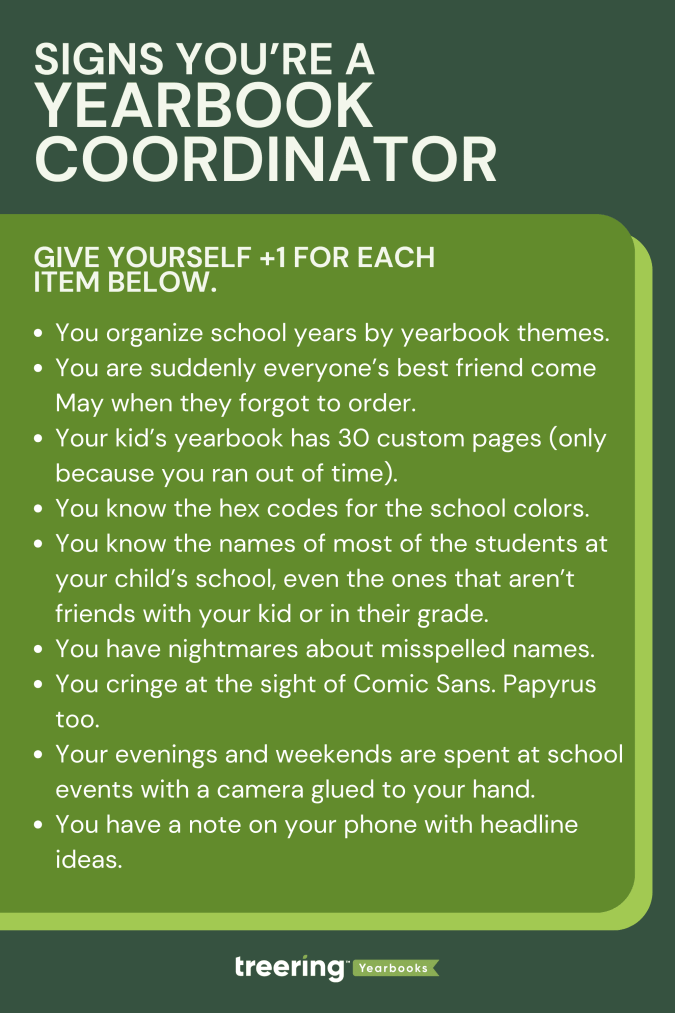
You Stress Over These Yearbook Woes
Spoiler alert: if this is your first year as the yearbook coordinator, there will be some stress. After you laugh your way through this list (rimshots not included), check out a more serious one our team did: 10 Ways to Relieve Adviser Burnout.
- You have nightmares about misspelled names.
- You cringe at the sight of Comic Sans. Papyrus too.
- You can spot a typo from a mile away.
- You wake up in the middle of the night to question whether you added that kid who wasn't there on picture day.
Boundaries You Don’t (Yet) Have
We are all works in progress. (Read: no judgment here.)
- You have over 3000 photos sorted into folders by school event.
- You consider caffeine a major food group.
- Your evenings and weekends are spent at school events with a camera glued to your hand.
- You have a note on your phone with headline ideas.
- You have contacted friends on social, neighbors, your bunco group, gym friends, and random parents at the grocery store to add photos and order their books.
- Your idea of a vacation is a day without a deadline. Conversely, you’ll pay for airplane wifi to finish that last spread.
- You consider the yearbook room your second home.
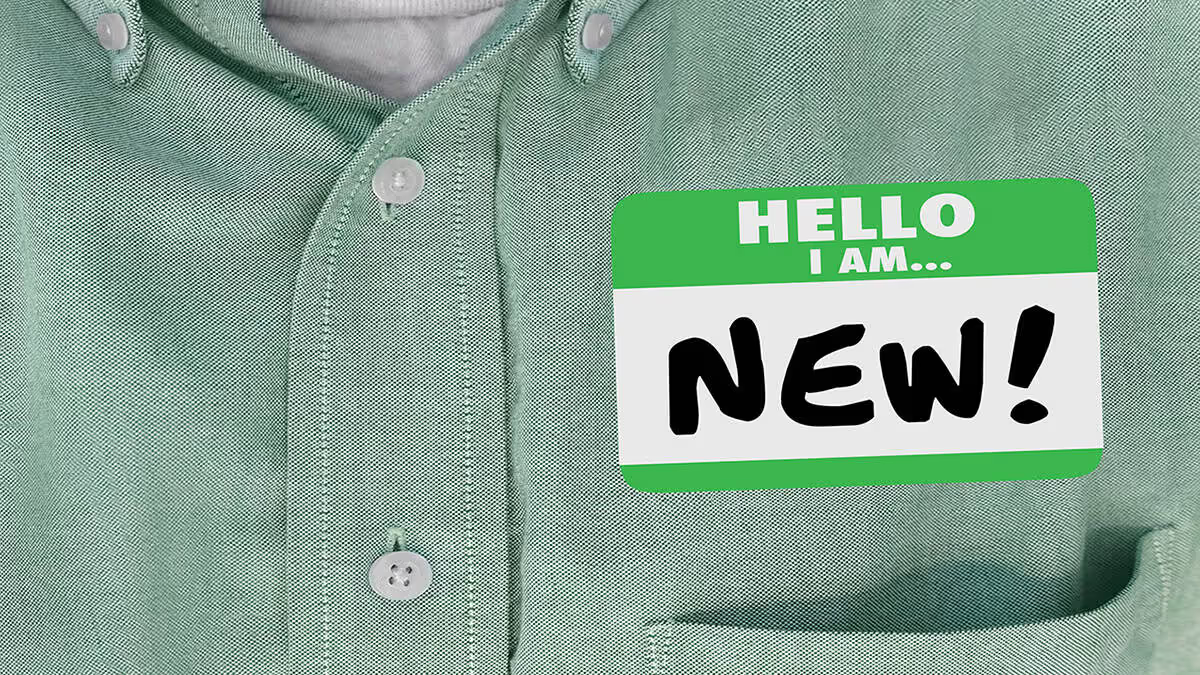
Rookie yearbooking: tips for the first-year adviser
Making a yearbook is unlike any other subject or volunteer committee. Yearbook coordinators/advisers/sponsors/heroes manage people and processes. They record history and achievements. They are marketers, photographers, designers, and party planners. And we're here to help. Consider this the first-year yearbook adviser guide to organization to help you however you scored the gig: if you showed up last to the PTA meeting or you are excited to use your background in journalism.
If you need to fast-track your yearbook journey, check out our four-part series Yearbook in 60 Days.
Understand Your Contract (*non-contract if you’re in the Treering Community)
Expectation vs. reality is a powerful meme thing. We crafted this list of questions to help advisers choose a yearbook company. If one was chosen for you, use the list to clarify the relationship between your school and your publisher. To quote my mom, “They work for you.”
Treering doesn’t do contracts or order minimums. You tell us when your one deadline is.
Determine Your Page Count
The best planning nugget this adviser received is to start with the end in mind. A yearbook ladder does just that. A ladder is a chart that represents the pages in a yearbook. Use it to allocate sections and page content.
Start with the last few years’ yearbooks, the latest school calendar, and your team.
- Brainstorm the non-negotiable events, sections (people, arts, sports), and yearbook traditions
- If relevant, brainstorm additional features, specials, and theme-related content
- Decide if you will organize the book chronologically, topically, or a blend of both
- Assign spreads to your team
We love doing this digitally because it can be fluid. Need inspo? Here are four sample ladders from other schools (use the tabs at the bottom to navigate between elementary, k-8, etc.).
Pro tip: If your page count is looking overwhelming because of time or budget, combine some topics. If it’s underwhelming, return to number two: what additional meaningful content will you add to your yearbook?
Gather Content
Your ladder is worthless unless you can fill those pages. Harsh (and true). Here are three of our favorite resources to go from blank page to showstopping spread.
Pump Your Project
Many schools wait until the last minute to sell books. Starting sales when school begins builds momentum. These early sales fuel you as a first-year adviser. It also alleviates some of the last-minute pressure on parents already balancing the end-of-the-year activities.
From page count to promotion, these tips will help you stay organized as a first-year adviser. Happy yearbooking!

4 ways to simplify yearbook creation
At a recent PTO event, we handed out eye masks that said, "No more yearbook headaches." Yes, it was the hottest piece of swag there, and more than that, it was a promise: Treering exists to simplify the yearbook process by leveraging technology.

1. Use templates
Templates are drag-and-drop designs for yearbooks. Generally, they have frames for photos and may contain text boxes and other design elements. Yearbook staff, often parents and students with varying degrees of design experience, can quickly learn to use templates. Not only does this speed up the yearbook creation process, it also keeps the books looking unified.
Theme packages contain coordinating fonts, art, and page layouts. You can easily build a book using page templates for sports, events, and classroom activities.
Select a theme for a whole book look. Templates can often be matched to school themes, colors, and mascots with a few clicks, ensuring the yearbook reflects the school’s identity without extensive custom design work.
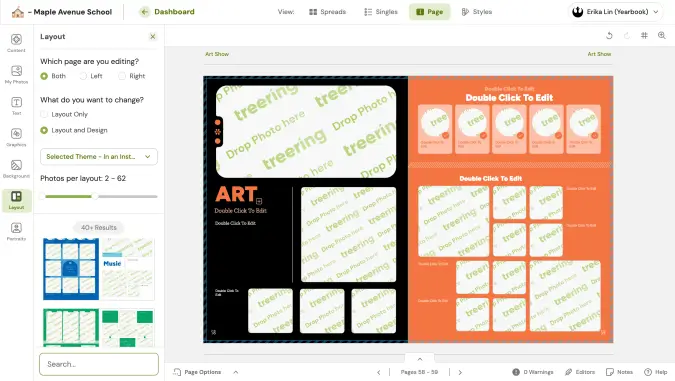
Eliminate decisions on bleed, spacing, and typography with professional designs built into your yearbook software. With these design elements already decided, the yearbook team can focus on gathering content.
2. Shared photo folders
Crowdsourcing allows individuals to submit photos from events, activities, and everyday school life. It’s the POV for which we all clamor on social media. When students and staff contribute their photos, they also feel a sense of ownership and pride in the yearbook, making them more likely to purchase the yearbook.
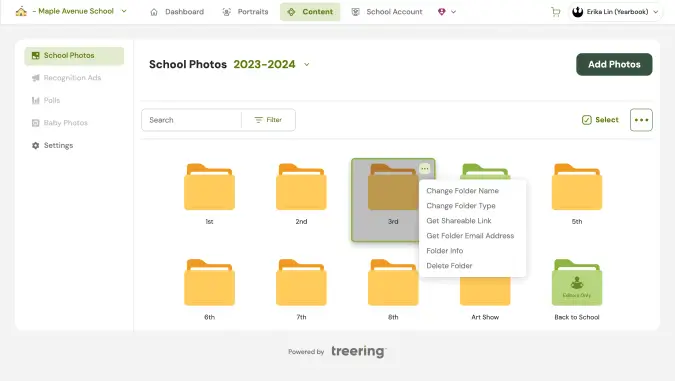
By opening up submissions to the greater school community, you also create a broader representation in the yearbook. Allow continuous contributions throughout the year to keep the yearbook team updated with recent events and activities. For best results, do a timely, specific ask to fill your shared folders. If the field trip is Friday in September, get the word out before October.
3. Choose digital
Digital printing helps streamline yearbook production. With a fast turnaround, it grants more time for design. Additionally, print-on-demand offers the flexibility to accommodate last-minute orders. (We busy parents thank you!)
Print-on-demand also simplifies things by eliminating inventory management. No extra books means no summer flash sales or hitting up the alumni association years later. This method is cost-efficient for smaller schools as well. No minimums mean no set-up charges.
The best part: digital printing makes it easier to create one-of-a-kind yearbooks with custom pages.
4. Offer personalization
With Treering Yearbooks, parents can add two pages full of their memories—like vacations, milestones, or hobbies—to their child’s copy of the yearbook. When students look through their yearbooks, they will find their memories and their photos alongside traditional yearbook pages. Each copy is unique.
Parents can add those personal touches using integrated online design options for recognition ads and custom pages. (That’s one less thing for the yearbook adviser to do!)
Like crowdsourcing, customization creates coverage. It celebrates each child’s involvement in school and out.
Templates, crowdsourcing, digital printing, and personalization relieve many of the challenges associated with traditional yearbook production. These innovations reduce costs and save time. The result: a high-quality, personalized, and inclusive yearbook that accurately captures your school’s experience.
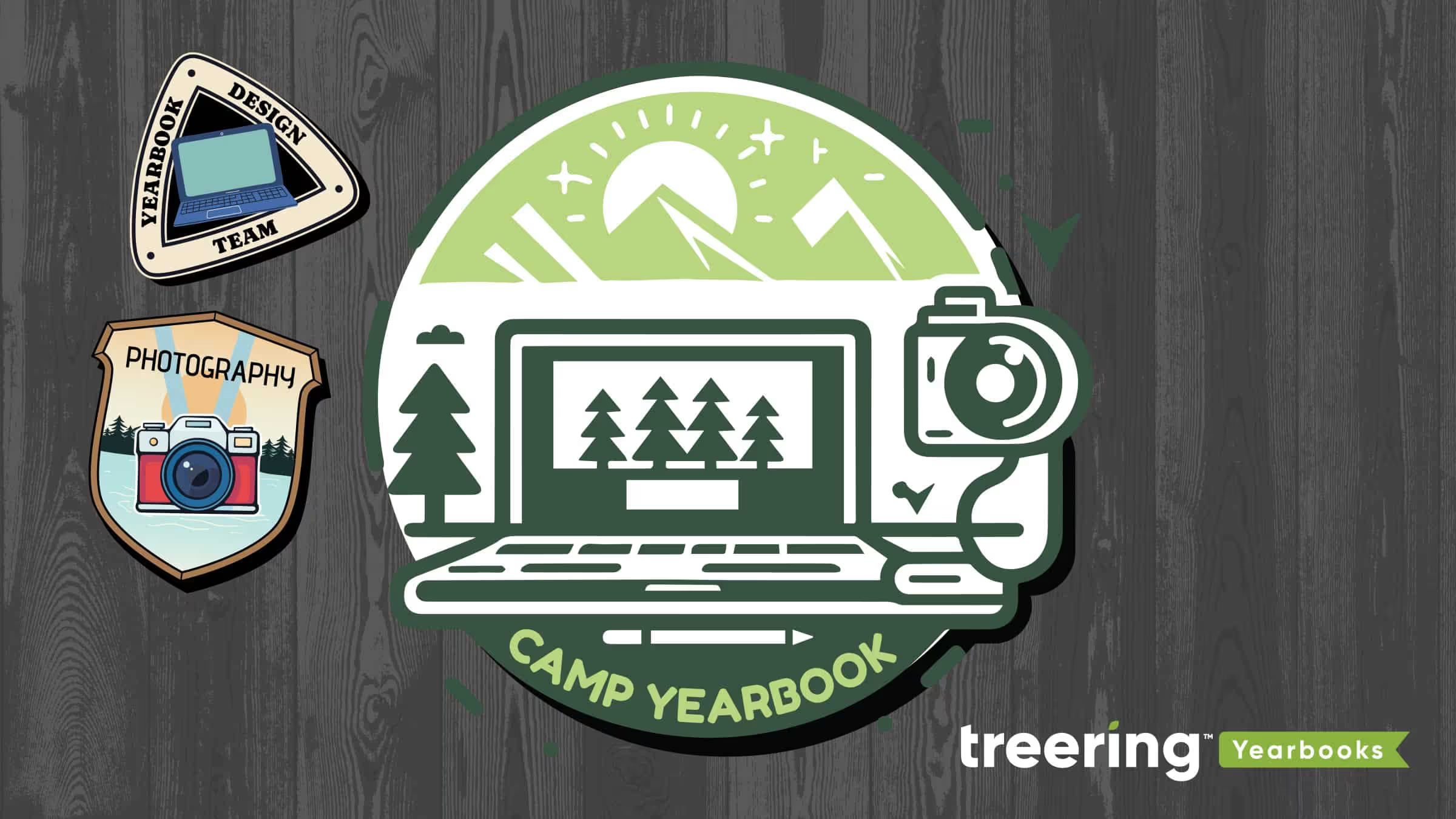
Virtual PD: Camp Yearbook 2024
We always say we will get started on yearbook planning over the summer. Raise your hand if you follow through. (My hand is down too.) Meet Camp Yearbook, Treering's two-day virtual yearbook planning course. It's part large-group training; part small-group mentoring and idea sharing. And it's 100% live.
The goal: have the first six weeks of yearbooking planned.
What to Expect
Treering's Camp Yearbook is a cameras-on, all-in yearbook planning experience.
Event Structure and Registration
Both sessions will have the same schedule, staff, and support materials. Register via the Yearbook Club webinars page.
Treering Mentors
All attendees will be in a small group led by a Treering staff member who served—or currently serves—as a yearbook adviser. In groups specific to school style and yearbook team structure, you can ask questions about grading, crowdsourcing, club structure, page count, and whatever else you need answered. (Your camp counselors aren't Treering life coaches, but close.)
Grow Together
Breakout groups for parent volunteers, solo yearbook coordinators, educators, and club leaders mean you get meaningful support and specific-to-you resources.
Camp Yearbook FAQs
Your questions deserve answers!
How is Camp Yearbook different from Treering Live (TRL)?
TRL is Treering’s flagship event. During National Yearbook Week, TRL will have all the design training, coveted prizes, and organization inspiration yearbook advisers have come to expect. We look forward to it as much as you do!
Camp Yearbook is a virtual summer PD program for yearbook coordinators and advisers who want to get more from their program through professional mentoring and collaborative idea-sharing. It’s a cameras-on, all-in yearbook planning experience.
What do I need to prepare for Camp Yearbook?
Having previous copies of your yearbook and the 24-25 school calendar may be helpful. We'll provide the goal-setting worksheets, ladders, idea decks, and resources because we want you to finish Camp Yearbook with your first six weeks of yearbooking planned.
For best results, have two monitors: one for demos and one so you can work as we go.
How much is it?
Free ninety free. Charging extra for support and training is not our thing.
Will I get CE/PD hours for attending?
Yes! Upon completion, attendees will receive a certificate for six hours of yearbook production and classroom planning.
Can students attend?
Nope. Consider this a break… a working break.
Will Camp Yearbook be recorded?
Camp Yearbook is an interactive, experiential event. Recordings will not be made public.
Can I attend both the AM and PM sessions?
No, the programming is the same for both sessions. Please do not register for both.



